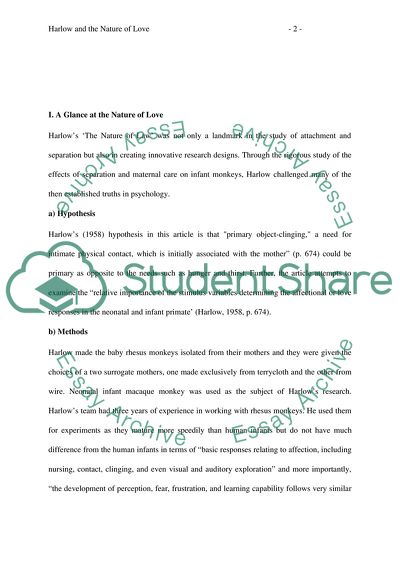Cite this document
(“Harlow's Observations in The Nature of Love Research Paper - 1”, n.d.)
Harlow's Observations in The Nature of Love Research Paper - 1. Retrieved from https://studentshare.org/biology/1751149-paper-review-and-research-on-the-article-the-nature-of-love-by-harry-harlow
Harlow's Observations in The Nature of Love Research Paper - 1. Retrieved from https://studentshare.org/biology/1751149-paper-review-and-research-on-the-article-the-nature-of-love-by-harry-harlow
(Harlow'S Observations in The Nature of Love Research Paper - 1)
Harlow'S Observations in The Nature of Love Research Paper - 1. https://studentshare.org/biology/1751149-paper-review-and-research-on-the-article-the-nature-of-love-by-harry-harlow.
Harlow'S Observations in The Nature of Love Research Paper - 1. https://studentshare.org/biology/1751149-paper-review-and-research-on-the-article-the-nature-of-love-by-harry-harlow.
“Harlow'S Observations in The Nature of Love Research Paper - 1”, n.d. https://studentshare.org/biology/1751149-paper-review-and-research-on-the-article-the-nature-of-love-by-harry-harlow.


